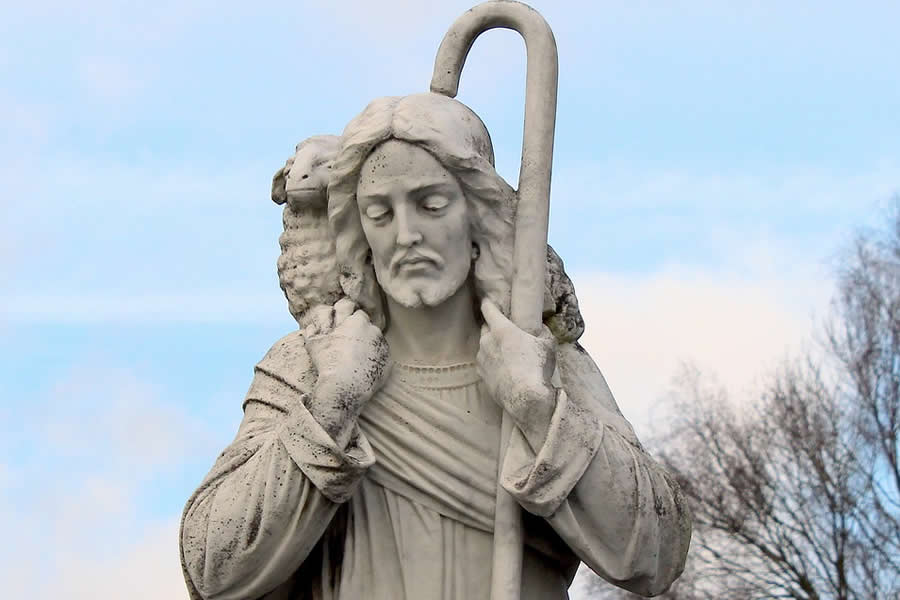
Come Closer to the One who Loves You
04-25-2021Pastoral ReflectionsRev. Brian F. ManningIn the very long history of the Christian faith, the image of the shepherd has been constant. Since we were very young, we often saw pictures and statues of Jesus as a shepherd. Oftentimes there would be a young lamb sitting astride his shoulders. Pictures often have Jesus standing among fluffy sheep. We celebrate this Sunday with the name "Good Shepherd Sunday". This title for the Fourth Sunday of Easter goes way back in church time. We know that when we think about and ponder the meaning of Jesus as a Good Shepherd we can deepen our faith and relationship with Our Lord.
We learn in the first reading that Peter's preaching career was not all that polished and smooth. Because Peter cured the invalid, some folks were jealous of him and reported him to the authorities. This caused him to end up in jail and then had to explain himself, his words, his actions, and his beliefs. This became the opportunity for him to justify himself and his newly formed community. Note that Peter simply explained himself and then invited the listeners to accept the rejected one, Jesus Christ the Nazorean "whom you crucified, whom God raised from the dead". The words of Peter and also his actions gave witness to his faith. Peter boldly spoke of Jesus who was like a good shepherd and who had laid down his life for his sheep.
The Gospel reading begins after Jesus has cured a man who was born blind. This speech by Jesus is a response to the harsh and hypocritical comments by the Pharisees. This discourse is meant to describe the relationship of Jesus to the man born blind, and in fact to all of us, even including the disbelieving Pharisees. The reason why Jesus uses the image of a shepherd is that the people had once esteemed the role of a shepherd because King David had originally been a shepherd. In the time of Jesus the role of shepherd had lost its luster; shepherds were now outsiders beyond society just as, their work was always outside on distant hills. Shepherds were no longer able to fulfill the very strict religious laws that came into force and thus were considered lawbreakers and irreligious. Shepherds, because they could not follow all of the laws and rules, had been abandoned by the religious leaders.
It is thus quite surprising that Jesus uses the outsider shepherds as a new image of redemption. We need to make clear that Jesus is actually focusing on the relationship of the shepherd and the sheep, not really on what at the time Jewish society thought about them. He is pointing out that a "fake" shepherd would flee at the first sight of trouble or simply write off a lost sheep as the "cost of doing business". He tells the folks that the good shepherd is clearly different; this good shepherd will lay down his life for his sheep. The religious leaders of Israel in the time of Jesus had not done this; instead they had takin to berating unceasingly the people.
We know that at the time of Jesus, shepherds tended relatively small flocks and actually knew their sheep by name and also knew their markings and temperaments. Jesus tells us that the good shepherd knows his own more intimately than this; in fact he knows them the way the Father knows Jesus. This closeness of Jesus to his flock is meant for all of us. He has laid down his life for us. We need to come closer to the One who loves us so much as He is so close to us.
BACK TO LIST